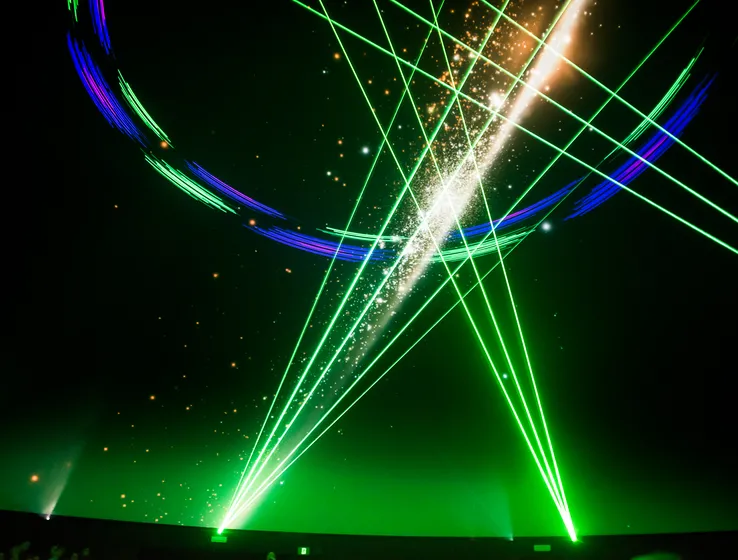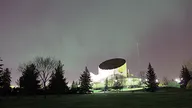The Visible Planets
Mercury puts on its greatest showing for 2025 for northern hemisphere observers early this month. Look for Mercury above the southeastern horizon before sunrise this month. Mercury will be at its greatest elongation west of the Sun (21 degrees) on December 7. On December 17 and 18, Mercury can be seen near the waning crescent Moon.
Venus is found low along the southeastern horizon prior to sunrise at the start of the month but soon disappears into the glare of the rising Sun after a few days into the month.
Mars is not visible this month.
Jupiter is fast approaching its date of opposition early in the new year, so we can see Jupiter rise above the northeastern horizon a couple of hours after sunset. As the night goes on, Jupiter takes a high arc across the sky, appearing highest (about 58 degrees), when due south at about 3:45 am at the start of the month or 1:45 am by the end of the month. On December 7, look for Jupiter near the waning gibbous Moon. Jupiter continues to reside within the zodiac constellation of Gemini, the twins.
Saturn is seen above the southeastern horizon after sunset this month. It gains elevation through the night appearing highest in the southern sky (about 33 degrees) at about 7:30 pm early in the month and then at about 5:30 pm at the end of the month. Saturn can be seen by the waxing crescent Moon on the night December 26, making for a nice pairing of these two celestial bodies. Saturn continues to skirt the eastern part of the constellation of Aquarius, the water bearer.
Moon Phases
December 4 Full Moon (The Cold Moon)
December 11 Last Quarter Moon
December 19 New Moon
December 27 First Quarter Moon
Special Events
International Space Station (ISS) Observable Passes
During the month of December there will be two evening passes of the ISS, one on December 1 and one on December 3. From December 10 through till December 30, ISS passes move back to our predawn morning sky hours. Exact times of these passages for your location can be found by visiting the website http://www.heavens-above.com or by using satellite tracking smart phone apps like Sputnik or Spot-the-Station.
December 8 Royal Astronomical Society of Canada (RASC) Edmonton Centre meeting
Live in the Zeidler Dome at TWOSE and presented virtually through Zoom.
7:30 pm – 9:30 pm
Free for anyone to attend.
See http://www.edmontonrasc.com for more details.
December 13/14 Geminid meteor shower peaks! Up to one hundred meteors/hour possible.
December 19 Comet I3/ATLAS (C/2025 N1) closest to the Earth (270,000,000 km)
December 21 Winter solstice occurs at precisely 8:03 am MST
December 22 Ursid meteor shower peaks. Minor meteor shower.
December 20 – January 4 School Christmas/Winter break
December 25 Merry Christmas!
December 31 New Year’s Eve





